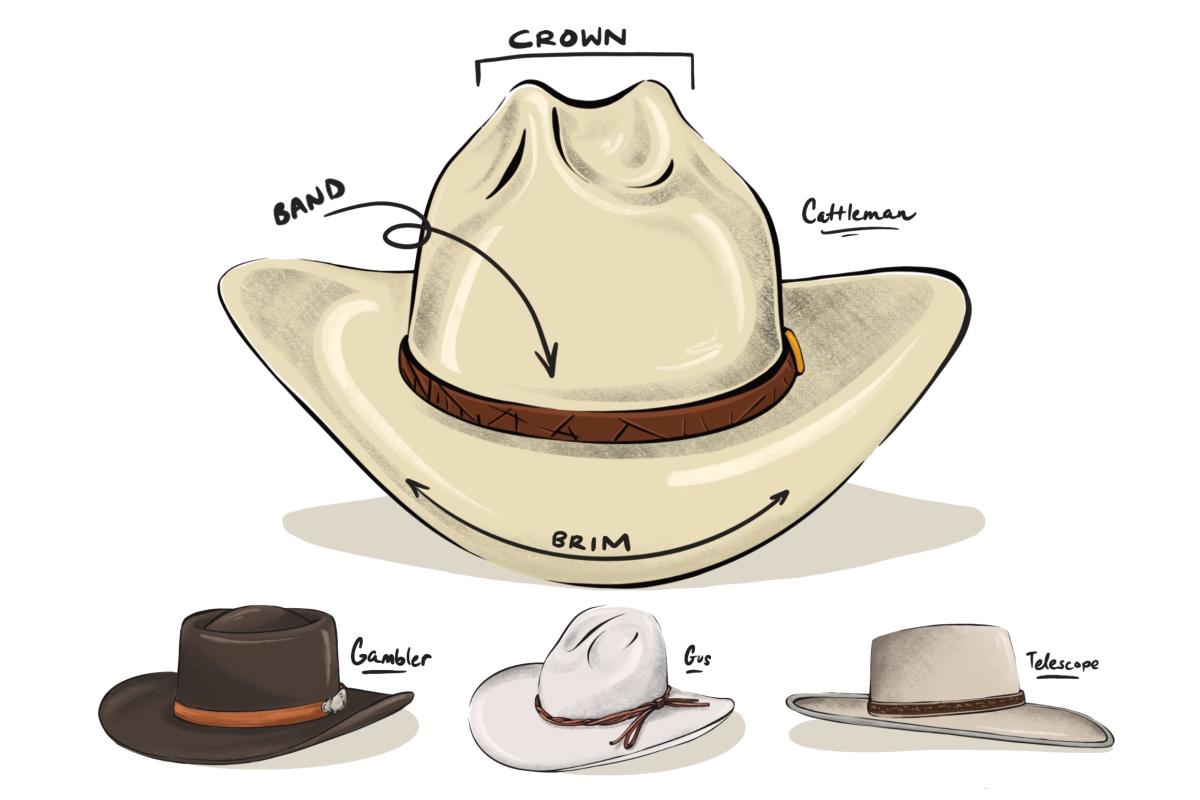“I’VE DONE HATS for everybody from the Black Crowes to Beyoncé to Tim McGraw,” says Charlie Overbey, founder of Lone Hawk Hats, which has locations in Madrid and Los Angeles. “With country music being so big, the cowboy hat has become a mainstream staple. They’re just cool.”
Overbey began making hats in 1991 while working as a musician in LA. “I wanted flamboyant rock and roll hats,” says Overbey, who moved from California to the funky former mining town’s outskirts for its off-grid lifestyle. “But that wasn’t something you could go out and just buy.”
Eschewing traditional tools of the trade, like a block and a steamer, he began handcrafting one-of-a-kind hats out of vintage shells from the late 1800s to the 1970s. “I see them more as sculptures,” he says. Stylistically rooted in the cowpunk (or country-punk) Southern California music scene of the 1980s, Overbey’s hats evoke a “Western vibe—but more bent up,” he says, referring to their deeply dipped brims, pulled-up sides, and heavy distressing.
Overbey’s Madrid shop also connects to its sister store, Honeywood Vintage, in L.A., which offers dresses, jewelry, and other artifacts from past decades. “A lot of times people will take on a whole different persona when they put a hat on,” says Overbey, whose latest album, In Good Company, dropped this summer. “It just brings a different element of you to the table.”
Read more: Put a capper on your style at one of these shops.

Crown. The upper part covering the head and its crease partly determines a hat’s style—from pinched (known in the industry as Cattleman and Tom Mix styles) to rounded (Gambler, Telescope) or uncreased open crowns. “A Gus-style hat is the classic Western pinch front,” Overbey says of the down-sloped crown style named after the Augustus McCrae character in Lonesome Dove.
Brim. New Mexico’s working cowboys still use wide horizontal brims, or bills, to combat weather. The ledge that circles the crown also contributes to the hat’s style, depending on its dip (slope front to back) and roll (curve of the sides). “You can roll the front, the sides—you can pencil roll the brim,” Overbey says, referring to brim customizations.
Material. A hat’s material affects price, durability, weight, and color. While beaver felt is the gold standard for cowboy hat material, Overbey warns against wool. “There are a lot of junky hats made from wool,” he says. Straw hats are popular in summer due to their light weight and breathability. Color plays a role, as well. “A black hat in the summer is obviously going to be much hotter than a blond- or a sand-colored hat,” Overbey says.
Fitting. When customizing hats, Overbey begins with head diameter in inches. Head shape, whether oval or more rounded, also changes the hat’s design. “A hat should be pretty snug,” Overbey says. “There’s a hat shape for every facial shape.”
Bands. Ribbons, bows, beads, braids, and embroideries all give character. “I tend to hand-cut and stitch all my own bands,” Overbey says.
KEEP IT CLEAN
“We recommend a soft-bristle paintbrush for fur felt hats,” says Stuart Dunlap, hatmaker and owner of The Man’s Hat Shop, in Albuquerque. “Never put sprays or anything like that on a fur felt hat.”


